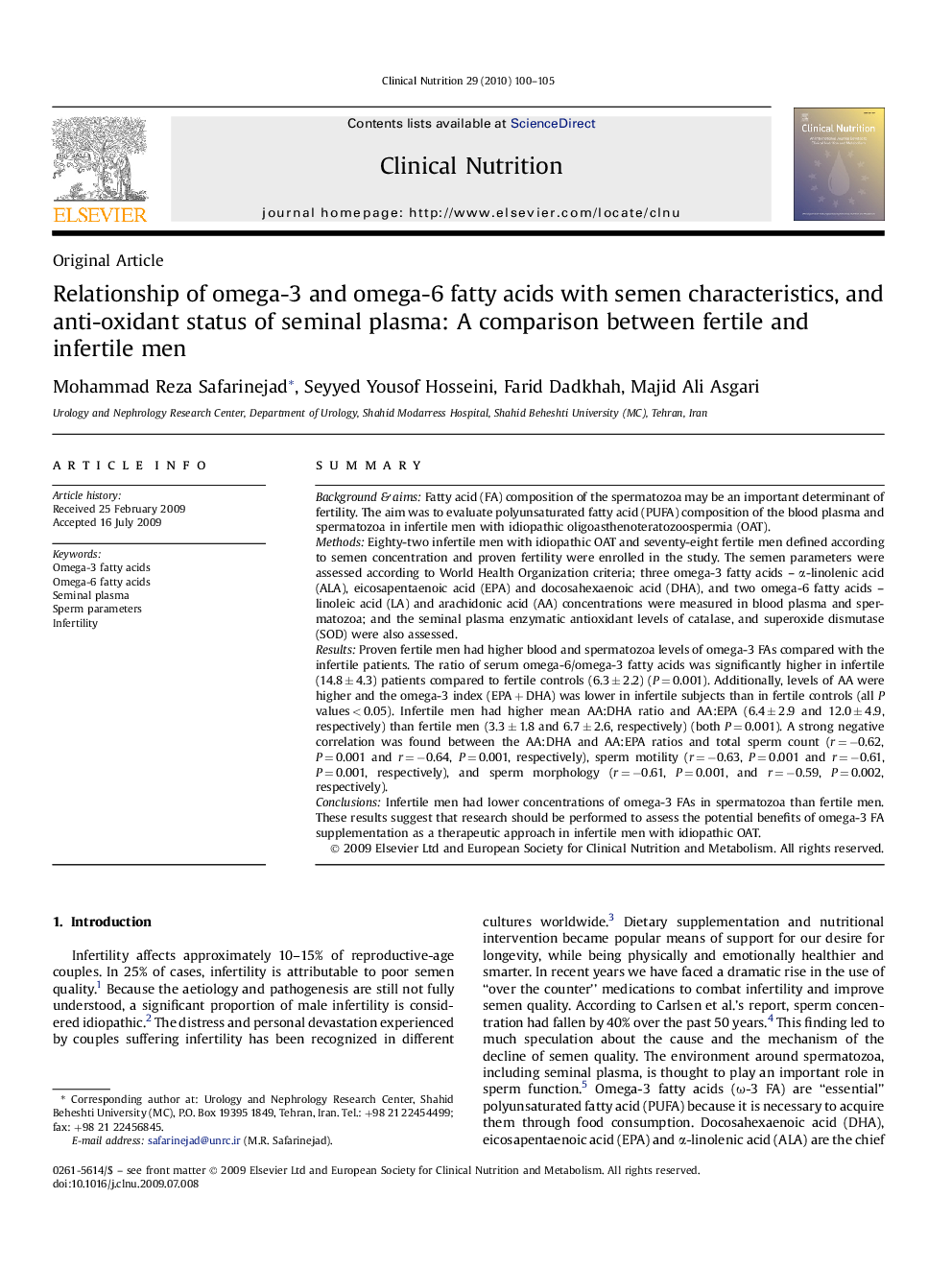| کد مقاله | کد نشریه | سال انتشار | مقاله انگلیسی | نسخه تمام متن |
|---|---|---|---|---|
| 2687288 | 1143007 | 2010 | 6 صفحه PDF | دانلود رایگان |

SUMMARYBackground & aimsFatty acid (FA) composition of the spermatozoa may be an important determinant of fertility. The aim was to evaluate polyunsaturated fatty acid (PUFA) composition of the blood plasma and spermatozoa in infertile men with idiopathic oligoasthenoteratozoospermia (OAT).MethodsEighty-two infertile men with idiopathic OAT and seventy-eight fertile men defined according to semen concentration and proven fertility were enrolled in the study. The semen parameters were assessed according to World Health Organization criteria; three omega-3 fatty acids – α-linolenic acid (ALA), eicosapentaenoic acid (EPA) and docosahexaenoic acid (DHA), and two omega-6 fatty acids – linoleic acid (LA) and arachidonic acid (AA) concentrations were measured in blood plasma and spermatozoa; and the seminal plasma enzymatic antioxidant levels of catalase, and superoxide dismutase (SOD) were also assessed.ResultsProven fertile men had higher blood and spermatozoa levels of omega-3 FAs compared with the infertile patients. The ratio of serum omega-6/omega-3 fatty acids was significantly higher in infertile (14.8 ± 4.3) patients compared to fertile controls (6.3 ± 2.2) (P = 0.001). Additionally, levels of AA were higher and the omega-3 index (EPA + DHA) was lower in infertile subjects than in fertile controls (all P values < 0.05). Infertile men had higher mean AA:DHA ratio and AA:EPA (6.4 ± 2.9 and 12.0 ± 4.9, respectively) than fertile men (3.3 ± 1.8 and 6.7 ± 2.6, respectively) (both P = 0.001). A strong negative correlation was found between the AA:DHA and AA:EPA ratios and total sperm count (r = −0.62, P = 0.001 and r = −0.64, P = 0.001, respectively), sperm motility (r = −0.63, P = 0.001 and r = −0.61, P = 0.001, respectively), and sperm morphology (r = −0.61, P = 0.001, and r = −0.59, P = 0.002, respectively).ConclusionsInfertile men had lower concentrations of omega-3 FAs in spermatozoa than fertile men. These results suggest that research should be performed to assess the potential benefits of omega-3 FA supplementation as a therapeutic approach in infertile men with idiopathic OAT.
Journal: Clinical Nutrition - Volume 29, Issue 1, February 2010, Pages 100–105